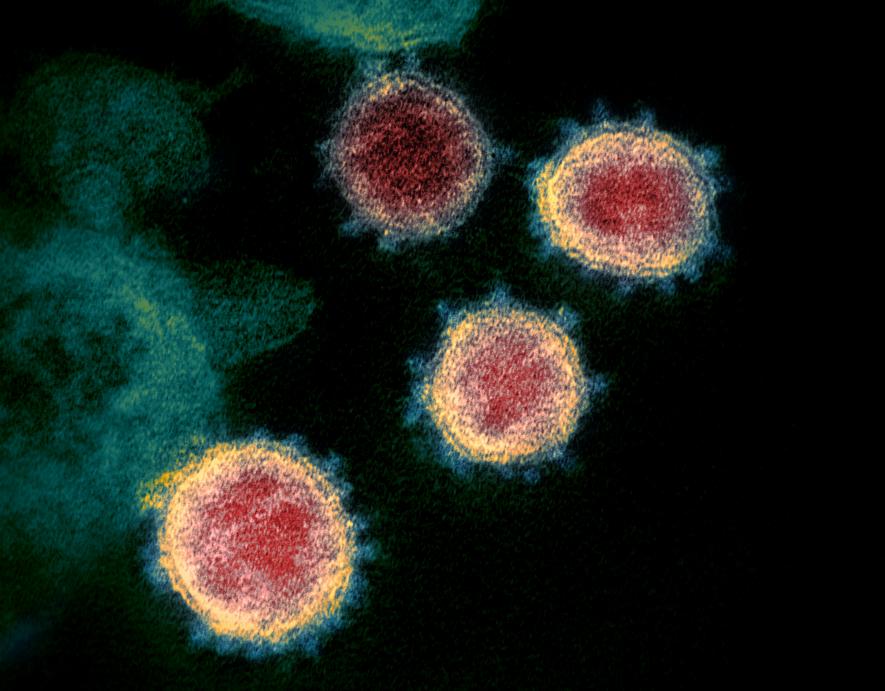SARS-like Viruses in Animals Infect 4,00,00 Humans Every Year: Study

Image Courtesy: Wikipedia
Coronaviruses have jumped over more frequently from animals to humans than it has been thought, a new study suggests. However, all the coronaviruses don’t trigger outbreaks that become a global cause of concern as in the case of COVID-19 and on a smaller scale like SARS in 2003. The study, available in the preprint server medRXiv, claims that an average of 4,00,000 people get infected by SARS-like coronaviruses annually due to the spillover effect, but it don’t trigger any detectable or concerning outbreak.
If the estimates of the study are correct, it shows that zoonotic spillover of viruses are still largely unknown to the scientific community. Zoonosis is an event where a pathogen (any infectious agent like bacteria, virus, parasites, etc.) jump over from animals to humans.
Commenting on the numbers of the study, which are, of course, not out caveats, Angela Rasmussen, a virologist at the University of Saskatchewan, Canada, who was not part of the study, said: “It should be eye-opening to the entire scientific community that we don’t know very much about the frequency of zoonotic spillover. That needs to change because, otherwise, we grossly underestimate it.”
The study was jointly conducted by EcoHealth Alliance, USA, and Duke-NUS Medical School, Singapore. The authors created a detailed map of the places inhabited by 23 bat species known to contain SARS-like coronaviruses. The bat habitat map was compared with human habitats to find out potential hotspots for the coronavirus-mediated infections. The analysis showed that more than 500 million people live in those areas where bat-originating coronaviruses can spill over to humans. These places include northern India, Nepal, Myanmar and including most of South Asia. They also found that the risk of infection by the coronaviruses in spillover events was the highest in southern China, Vietnam, Cambodia, Java and some islands of Indonesia.
The researchers also went ahead of creating the hotspot maps. It was revealed in small surveys conducted prior to the emergence of COVID-19 that some people, especially on Southeast Asia, contained antibodies against SARS-related coronaviruses. Antibodies are protein molecules that are produced when a pathogen infects a person. These protein molecules help fight off the pathogens and some of them remain active for a long time. The next time the same pathogen attacks the body, the antibodies easily fight it back.
The study’s authors combined the antibody data from pre-COVID period with the data representing how frequently people encounter bats and how long the antibodies remain active in the blood. The researchers estimated that some 4,00,000 infections in humans caused by the viruses every year in the region go undetected.
The corresponding author of the study, Peter Daszak of EcoHealth Alliance, said: “This is a definitive analysis of where on the planet the next SARS- or COVID-like virus is most likely to emerge. The maps could guide efforts to reduce the likelihood of spillover by changing behaviours in high-risk communities and targeting surveillance to detect new outbreaks earlier.”
Notably, Daszak was involved in funding the virology lab in the Wuhan Institute of Virology, China, from where the SARS-CoV-2 virus was speculated to have escaped to infect humans. Daszak, however, remains vocal against this speculation and advocates that SARS-CoV-2 came from the wild rather than the Wuhan lab. Daszak also said that his team’s latest findings could be a guide to find out the natural origin of SARS-CoV-2.
Daszak further said: “Interactions with bats are much more common than people think. Just living there means you’re exposed. People are sheltering in caves, they’re digging guano out of caves, they’re hunting and eating bats. The paper does not even address how many people work in the wildlife trade and may be infected indirectly when a bat virus infects another animal first.”
However, some of the experts said that 4,00,000 is too big a number to be confirmatory arguing that a detailed investigation is necessary to understand the real picture of the coronavirus spillover to humans.
David Fisman, an epidemiologist of University of Toronto, said: “I think if the seroprevalence is way off, the whole thing collapses. The high number of hidden infections doesn’t ring true because you would expect regular spillovers to be recognised as they are for rabies and the Nipah virus.”
On the other hand, other experts say the hidden infections can be a reality in a situation where they are short-lived and can’t give rise to any significant outbreaks. Moreover, many of the viruses may not be well adopted to survive in the human body and hence can’t fuel the onward transmission.
Get the latest reports & analysis with people's perspective on Protests, movements & deep analytical videos, discussions of the current affairs in your Telegram app. Subscribe to NewsClick's Telegram channel & get Real-Time updates on stories, as they get published on our website.
























